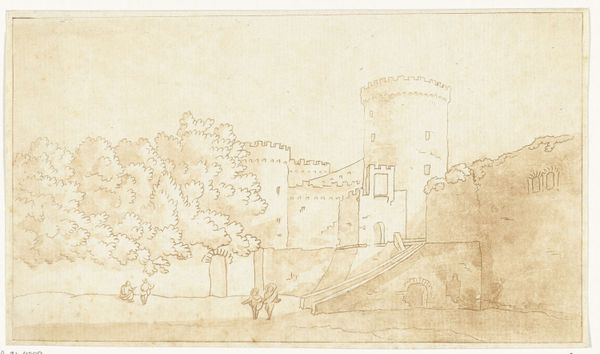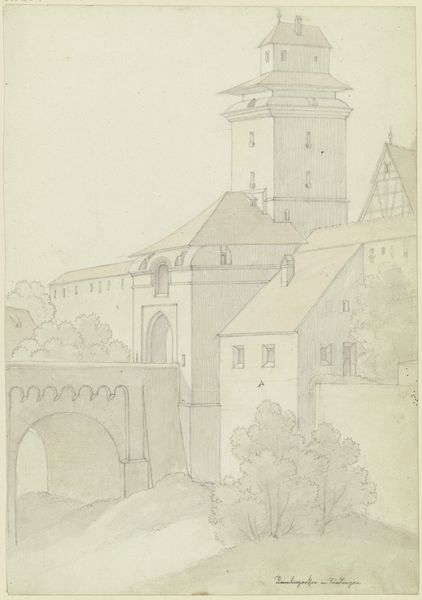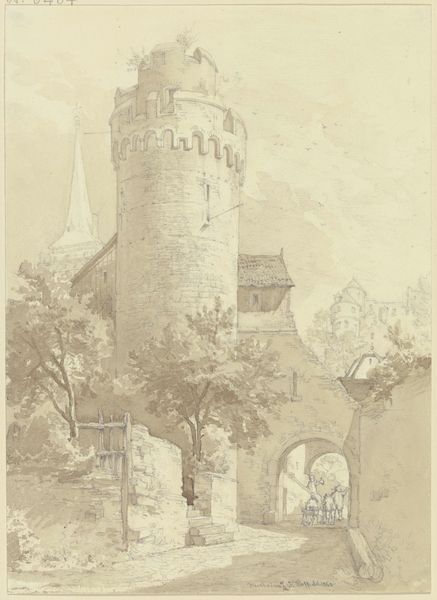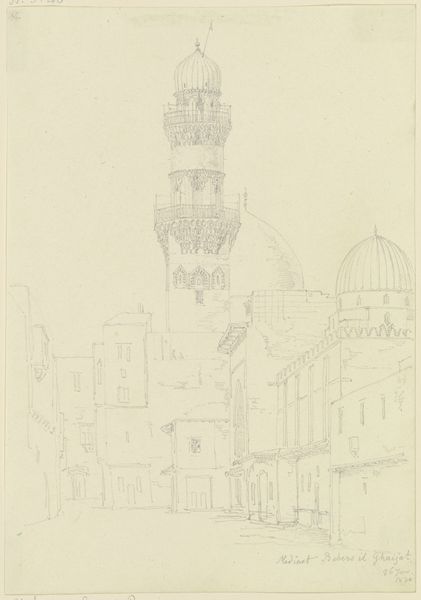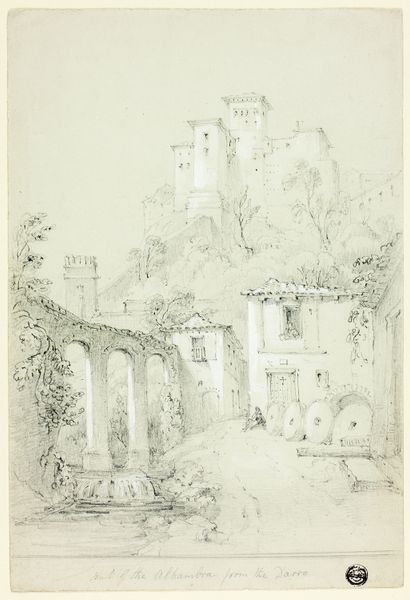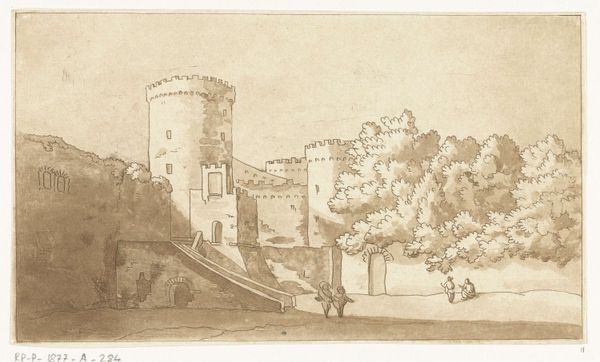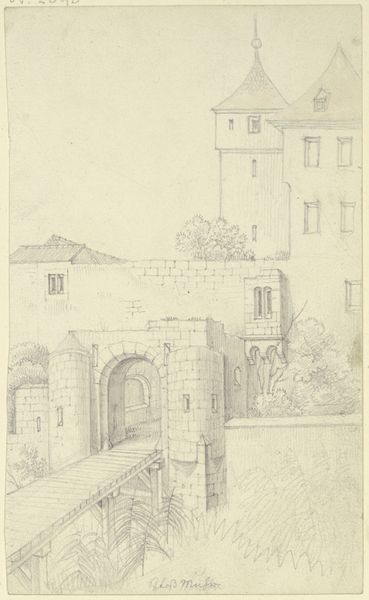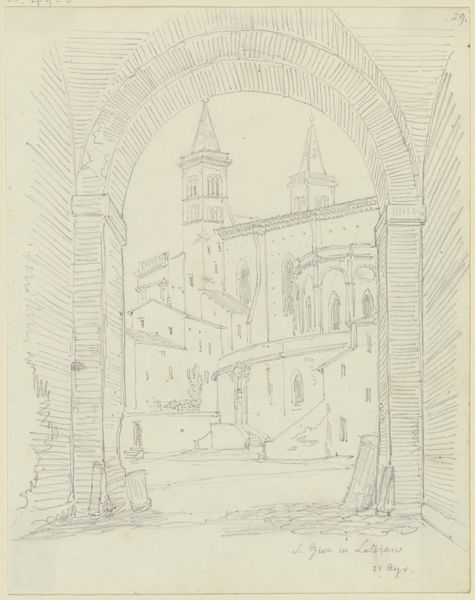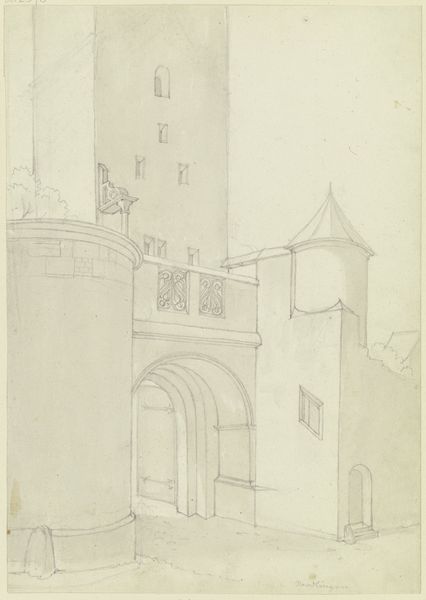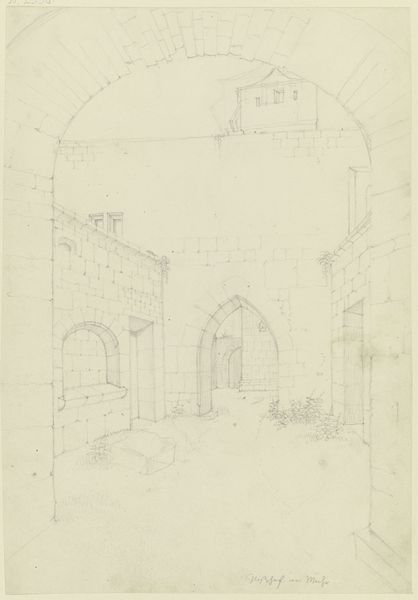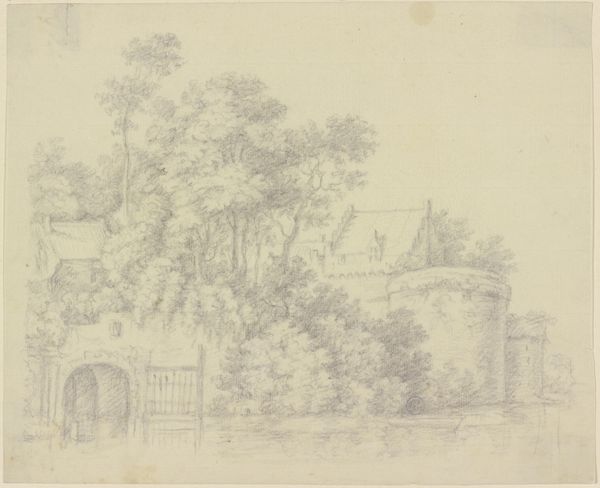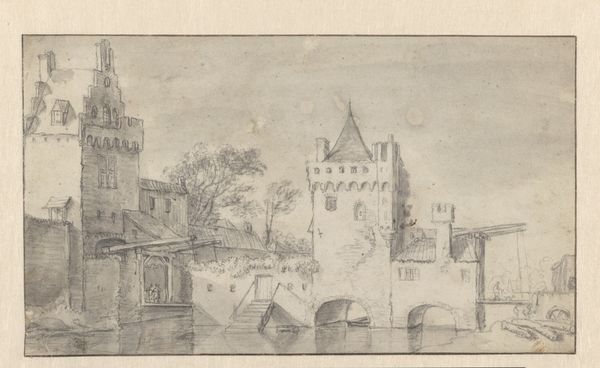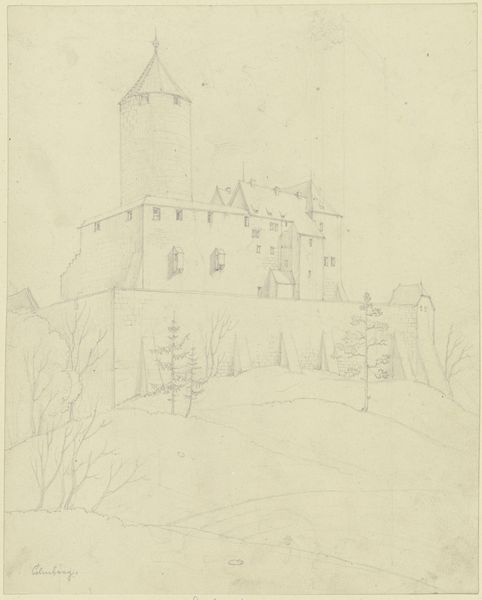
drawing, ink, architecture
#
drawing
#
landscape
#
etching
#
ink
#
line
#
cityscape
#
architecture
Copyright: Public Domain
Editor: This is Karl Ballenberger's "An der Stadtmauer zu Nördlingen," an ink drawing of a cityscape featuring imposing architecture. There’s almost a dreamlike quality to it, perhaps because of the limited range of tones. How do you interpret this work in the context of its time? Curator: It’s a fascinating study in how artistic depictions of urban landscapes can reflect socio-political ideals. Notice the emphasis on the defensive wall. City walls weren't just practical fortifications; they were potent symbols of civic identity, order, and protection. This drawing perhaps alludes to an idealized past, or maybe anxieties of the time. Editor: That's interesting. I was also struck by how the natural elements, like the trees, seem to merge with the man-made wall. Does that contrast have significance? Curator: Absolutely. Consider how during this period, landscape art was deeply intertwined with national identity. The blending of nature and architecture might reflect an attempt to connect the present with a perceived glorious past, suggesting a continuity of culture rooted in the land itself. Who was allowed within the walls versus without also highlights potential social tensions. Editor: I hadn't thought of it that way. So, this drawing isn't just a picture of a wall, but a commentary on power, belonging, and perhaps nostalgia? Curator: Precisely! And understanding those layers reveals how artists like Ballenberger contributed to shaping public perceptions of their society, visually reinforcing specific narratives about heritage and national pride. Editor: Wow, I definitely see it differently now. I thought it was a simple cityscape. Curator: That is the magic of historical context; it turns a simple image into a powerful narrative.
Comments
No comments
Be the first to comment and join the conversation on the ultimate creative platform.
